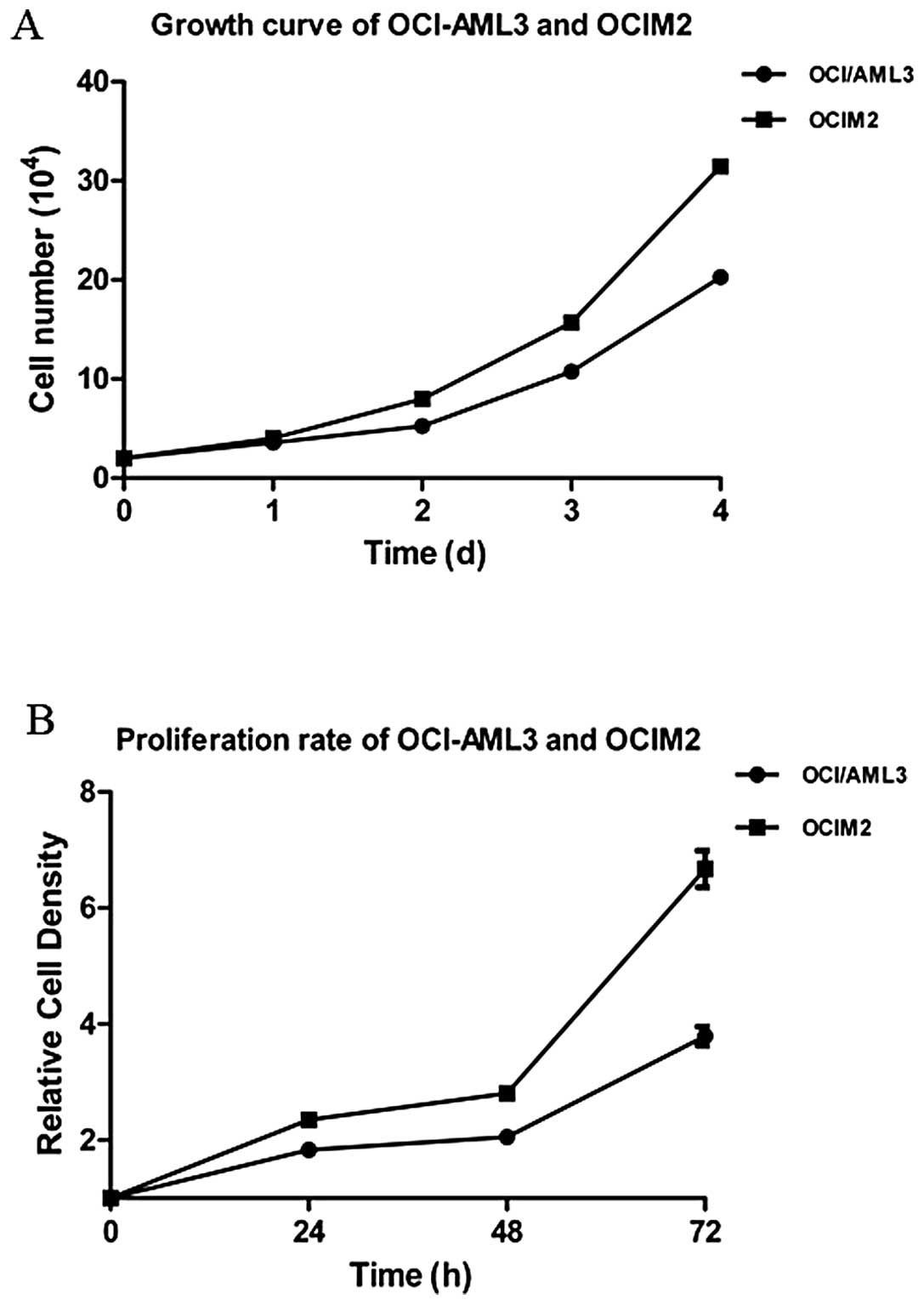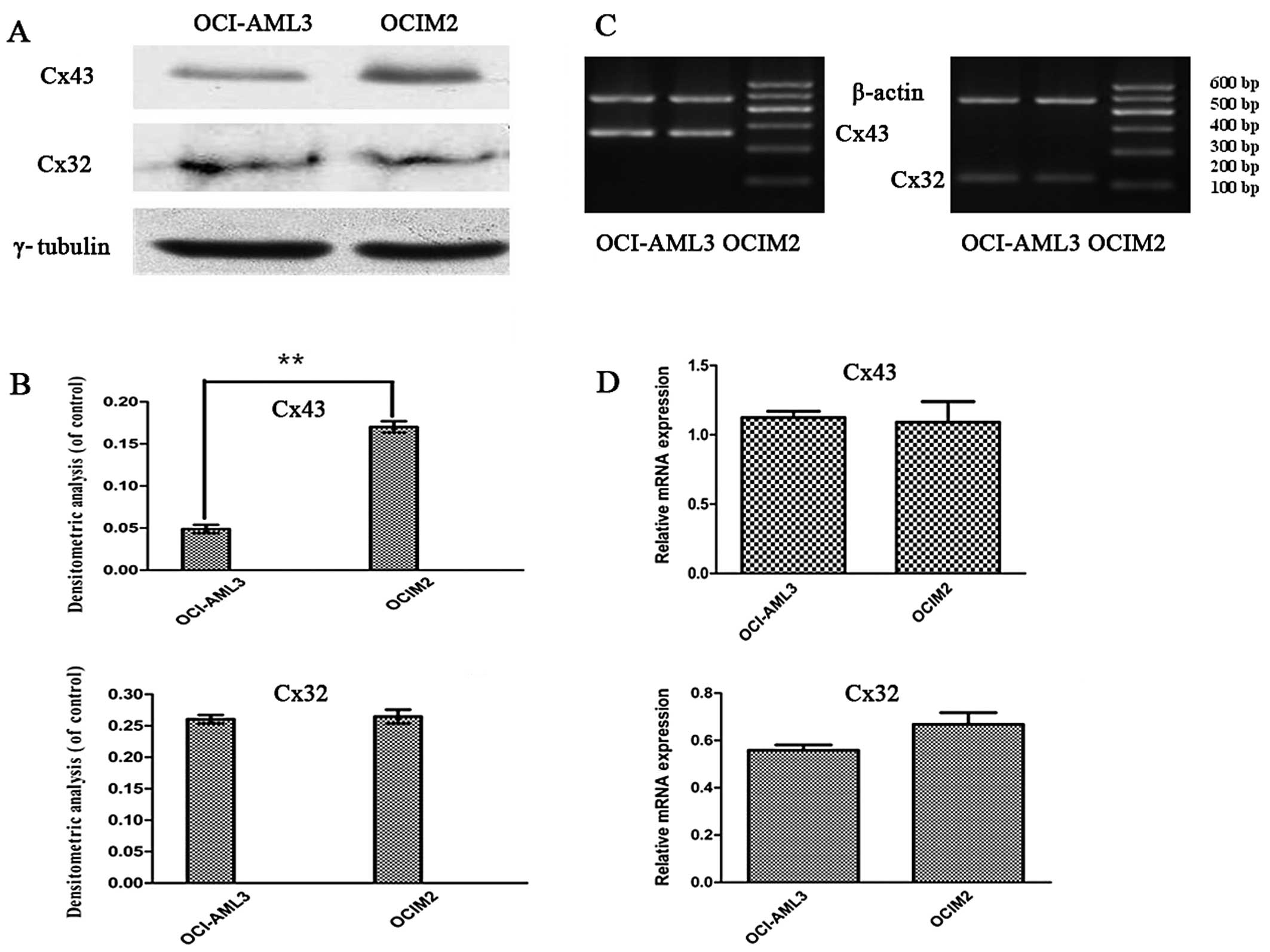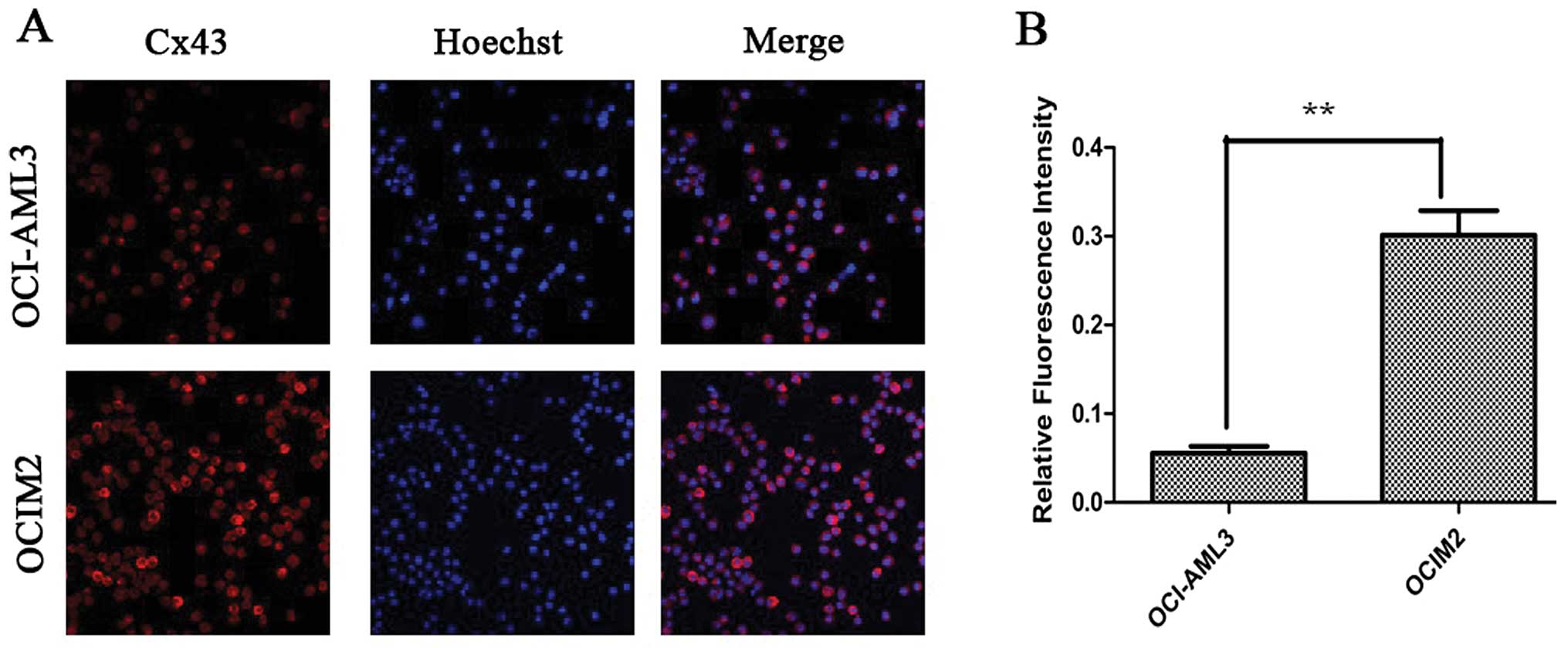Expression of connexin 32 and connexin 43 in acute myeloid leukemia and their roles in proliferation
- Authors:
- Published online on: August 29, 2012 https://doi.org/10.3892/ol.2012.884
- Pages: 1003-1007
Metrics:
Total
Views: 0 (Spandidos Publications: | PMC Statistics:
)
Total PDF Downloads: 0 (Spandidos Publications: | PMC Statistics:
)
Abstract
Connexins (Cxs), a conserved family of transmembrane proteins, function in the organization of cell-cell communicatin via gap junctions in multicellular organisms. However, the role of Cxs in acute myeloid leukemia (AML) is poorly understood. In this study, we investigated the relationship between cell proliferation and expression of connexin 43 (Cx43) and connexin 32 (Cx32) mRNA and proteins in acute myeloid leukemia in vitro. Proliferation was observed using a growth curve and the rate of proliferation was detected by MTT assay in the acute myeloid leukemia cell lines OCI-AML3 and OCIM2. Cell cycle and cell proliferation index were assessed by flow cytometry analysis. The mRNA expression of the gap junction genes Cx43 and Cx32 was detected by RT-PCR. The expression of Cx43 and Cx32 proteins in the cell lines was analyzed by western blot analysis and immunofluorescence. The doubling time of OCI-AML3 and OCIM2 was 48 h and 36 h, respectively. In OCIM2, the percentage of cells in the S phase fraction was 59.47±9.6%, and the proliferation rate was 78.12±8.9%; however, in OCI-AML3, the percentage of cells in the S phase was 24.95±5.8%, and the proliferation rate was 35.21±6.7%. At the mRNA level, both cell lines expressed Cx43 and Cx32, and there was no significant difference in the expression of Cx43 and Cx32 mRNA in the two cell lines. At the protein level, there was a significant difference in the expression of Cx43, but not of Cx32. The proliferation ability of OCIM2 was higher than OCI-AML3, and OCIM2 exhibited higher Cx43 western blot and fluorescence intensities compared with OCI-AML3. The results suggest that a higher expression of Cx43 in AML cells may play a significant role in the proliferation ability.














